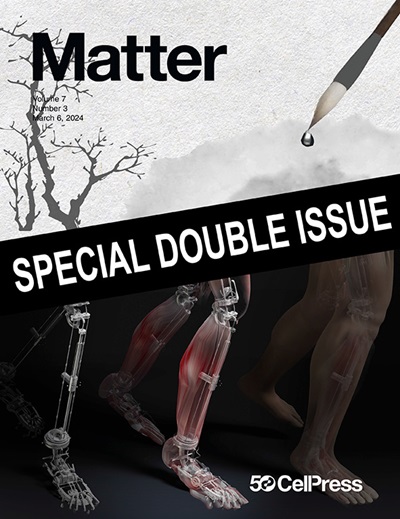Bioinspired electrocatalysts for water splitting
IF 17.3
1区 材料科学
Q1 MATERIALS SCIENCE, MULTIDISCIPLINARY
引用次数: 0
Abstract
Animals and plants have evolved over billions of years to develop unique characteristics that balance their structures and functions. In recent decades, efforts have been made to mimic these natural structures, forms, functions, and behaviors to address major challenges in the environmental energy sector. Electrocatalytic water splitting for hydrogen and oxygen production is one of the most promising methods for generating clean and sustainable fuels. Biomimetic designs have significantly expanded the boundaries of the energy field by fostering innovations in electrocatalytic materials and gas manipulation, thereby facilitating substantial advance in energy research. This review focuses on the recent progress in bioinspired water electrolysis catalysts from two perspectives: simulation of organismal structures and construction of nanozyme architectures. We highlight key examples of interface engineering and hierarchical structures designed to enhance mass diffusion efficiency. Drawing on the insights from the hydrogenase and oxygen-evolving center of photosystem II (PS II), we present bioinspired strategies for enzyme-mimicking activity sites, mass transport channels, and specialized microenvironments. Finally, we discuss the future opportunities and development directions for bionic design at the device level with the aim of broadening the range of applications of bioinspired electrocatalysts.

求助全文
约1分钟内获得全文
求助全文
来源期刊

Matter
MATERIALS SCIENCE, MULTIDISCIPLINARY-
CiteScore
26.30
自引率
2.60%
发文量
367
期刊介绍:
Matter, a monthly journal affiliated with Cell, spans the broad field of materials science from nano to macro levels,covering fundamentals to applications. Embracing groundbreaking technologies,it includes full-length research articles,reviews, perspectives,previews, opinions, personnel stories, and general editorial content.
Matter aims to be the primary resource for researchers in academia and industry, inspiring the next generation of materials scientists.
 求助内容:
求助内容: 应助结果提醒方式:
应助结果提醒方式:


